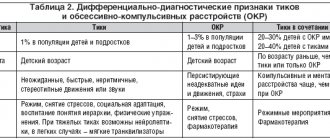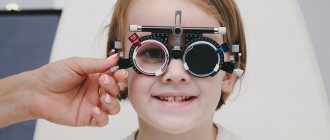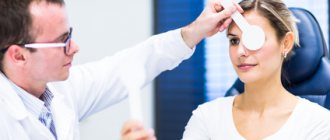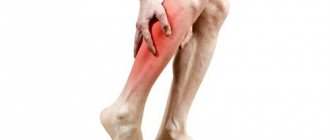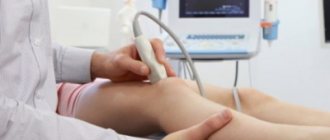This condition involves periodic contractions of the muscles of the face or eyelid that occur suddenly. This happens due to irritation of nerve endings, the function of which is to transmit impulses from the brain to a group of facial muscles. Facial myokymia is diagnosed more often in women; the process usually involves the lower eyelid of one eye, although the upper eyelid may also twitch. Muscle twitching, which causes discomfort, sometimes appears even in a healthy person and goes away on its own. If the eye twitches frequently, you need to visit a neurologist, because often this symptom has a neurological etiology.
2.Causes of eye twitching
Almost all people experience eye twitching at some point. Although the exact causes of this nervous tic are generally unknown, it may be associated with fatigue, stress, or consuming large amounts of caffeine. This slight twitching of the eye is painless and harmless. But even so, the nervous tic can be distressing, especially if the spasms are strong enough to force the eyelids to close and open completely.
When the eye twitches very rarely, it is not so serious. But some people experience cramps several times throughout the day. And this can be repeated over several days, weeks and even months. In this case, a nervous tic already becomes a real problem. In the most severe cases, eye twitching can cause a person to constantly blink and squint and be unable to keep their eyes open. Vision may deteriorate.
Sometimes eyelid twitching can be a symptom of eye diseases such as blepharitis (inflammation of the eyelids), dry eyes, photosensitivity, conjunctivitis. Very rarely, a nervous tic is a sign of brain or neurological disorders - dystonia, Parkinson's disease, Bell's palsy and some others.
Taking certain medications, such as those for epilepsy, can cause the eye to twitch.
Visit our Neurology page
Causes
The reasons for this condition include:
- Stress caused by significant visual load;
- Lack of sleep and overwork;
- Excessive visual strain from not using glasses when they are needed or using glasses that no longer provide clear vision. A computer monitor creates a particularly large visual load;
- Dry eyes, especially common in older people. At a young age, this condition is often associated with prolonged use of the computer, the use of contact lenses, and taking certain medications (antidepressants or allergy medications). In women over 50 years of age, dry eyes are often associated with menopause, a period of hormonal changes in the body;
- Drinking drinks that contain caffeine or alcohol;
- Poor nutrition and resulting deficiency of magnesium;
- Allergic reactions in which rubbing or scratching the itchy eyelids releases some histamine, which enters the tear fluid and causes muscle spasms.
If both eyelids twitch, which leads to their closure, as well as half of the face, a neurological disorder may be suspected, requiring consultation with a neurologist.
3.Types of eye twitches
There are three types of eyelid twitching:
- Twitching of the small eyelid;
- Benign essential blepharospasm;
- Hemifacial spasm.
Most common eyelid twitching
associated with
fatigue, stress, lack of sleep, drinking alcohol, caffeine and smoking.
The eye also twitches due to irritation of the surface of the eye or the membrane lining the eyelids (conjunctiva). Sometimes it is difficult to determine the cause of a tic, but almost always such twitching of the eyelid is harmless, painless and goes away quickly.
Benign essential blepharospasm
usually develops in middle-aged people and gradually progresses. In women, blepharospasm is diagnosed twice as often as in men. As a rule, benign essential blepharospasm begins with frequent blinking or irritation of the eyes caused by fatigue, stress or external irritants - bright light, wind, polluted air. As the disease progresses, sensitivity to light, blurred vision, and facial spasms may develop. In particularly severe cases, the spasms can become so severe that the eyelids remain closed for up to several hours. Gradually the eye stops twitching and the contractions go away. According to scientists, benign essential blepharospasm is a neurological disorder that develops due to a combination of environmental and genetic factors.
Hemifacial spasm
It is quite rare, and this disease does not just cause eye twitching. The tic usually affects the muscles around the mouth. Unlike other types of eyelid twitching, hemifacial spasm affects only one side of the face. The cause of tics in most cases is arterial pressure on the nerves of the facial muscles.
If your eye twitches, most likely nothing bad has happened. But you need to see a doctor if:
- The eye twitches for a week or longer;
- The eyelid twitches so violently that it closes completely;
- Spasms appeared not only in the eyes, but also in other facial muscles;
- There is redness, swelling, or discharge from the eyes.
About our clinic Chistye Prudy metro station Medintercom page!
Causes and symptoms
The main symptom of facial myokymia is painless muscle twitching of the lips and eyelids on one side of the face. The attack begins suddenly and ends after a few hours. Usually, at the initial stage, people do not notice the manifestation of facial myokymia in a patient. But, as the disease progresses and there is no treatment, the nervous tic can become stronger and more noticeable to others.
Eyelid twitching can be caused by:
- lack of sleep, overwork;
- unbalanced diet;
- abuse of drinks with large amounts of caffeine;
- alcohol consumption;
- frequent stress, constant worries;
- smoking;
- prolonged work at the computer;
- a brain tumor;
- multiple sclerosis, other neurological diseases;
- traumatic brain injury.
If there are signs of facial myokymia and the root cause of the disease has been identified, the neurologist will prescribe the necessary therapy to reduce the number of episodes and finally eliminate muscle flicker.
4.Treatment
In most cases, the eye twitching will stop on its own if you simply get some rest and/or limit your intake of alcohol, coffee, and tobacco. Ticks due to dry eyes and corneal irritation can be treated with drops such as artificial tears - they often help.
There are no effective treatments for benign essential blepharospasm, but there are a number of treatments that can reduce the severity of the disease. One of them, used for treatment in the USA and Canada, is Botox injections
.
When a small amount of botulinum toxin is injected into the eye muscle, spasms decrease or disappear for several months. But the effect gradually wears off and injections are usually repeated. There are also medications
prescribed for mild cases of benign essential blepharospasm, but their effectiveness is approximately 15%.
Some patients benefit from alternative treatments for blepharospasm
- acupuncture, manual therapy, diet therapy, hypnosis. But the benefits of these techniques have not been scientifically proven.
If none of the treatments for blepharospasm are effective, your doctor may recommend a myectomy.
. This is a surgical procedure in which some of the muscles and nerves of the eyelids are removed.
For the treatment of hemifacial blepharospasm
neurosurgical operation
may be prescribed , the purpose of which is to reduce the pressure of the artery on the facial nerve. But such an operation, although it gives a permanent result, can be associated with serious complications and permanent side effects.
Treatment and prevention of nervous tics of the eye
- In cases where a nervous tic occurs from overwork and stress, the surest way to get rid of it is to calm down and relax. Breathing exercises, relaxing baths, aromatherapy, and mild sedatives are suitable for this. Adequate sleep is also important.
- To relieve a tic attack, you need to squeeze your eyelids tightly for a few seconds, then relax. Repeat this exercise for 1-3 minutes. You can also blink quickly for 1-2 minutes: targeted muscle contraction can interrupt their involuntary contraction.
- It is important to replenish the supply of vitamins and minerals in the body to protect yourself from cramps, magnesium, calcium and glycine are especially important.
- It is worth giving up any “stimulating” foods, especially tea/coffee, dark chocolate and alcohol.
- Walking in the fresh air and ventilating the room will also help get rid of nervous tics.
If a nervous tic makes you suspicious and is happening more and more often, consult a neurologist. Specialists at the Aximed Neurology Clinic will conduct a full diagnosis of your body, identify the causes of tics and recommend the best methods for getting rid of them. Do not neglect your body; if any manifestations differ from the norm and periodically return, consult experienced doctors.
What actions should be taken if the eyelids twitch?
In some cases, preventative treatment for twitching of the lower or upper eyelid can be done independently.
In this case, you need to relax and do the following series of exercises:
- to optimize cerebral circulation, you need to sit on a chair so that the surface of your back and the back of your head are located in a straight line;
- shake your wrists a dozen times. This will relieve nervous tension;
- rub with your palms until you feel warmth;
- place both elbows on the table and fold your fingers;
- place the palms of your hands on your closed eyes so that the dimples of your palms are located opposite the eye sockets;
- cross the phalanges of the little fingers in the shape of glasses, place the other fingers except the thumbs on the forehead, place the palms on the cheekbones.
When the eyelids are closed, you need to relax and try to imagine something abstract from pressing problems and production tasks.
When the problem is in the spine
Twitching of the eyelid can also occur with diseases of the spine. In this case, the nerve fibers that contain motor neurons directed to a specific muscle group are compressed. In this case, it is also very important to visit a neurologist, since only he is able to identify problems and prescribe a full examination of the cervical spine, including an MRI.
In this case, drug therapy comes to the rescue, but quite often it is possible to cope without pills. Just move regularly enough, not necessarily in the gym. You can just walk more and not sit at the computer. It is very useful for diseases of the spine to visit a massage therapist and undergo several sessions of manual therapy.
If twitching of the eyelid of the right eye persists for several weeks, and the discomfort gradually spreads to most of the face, then this indicates a serious neurological deficit. Sometimes the cause lies in ordinary vegetative-vascular dystonia, but often it is associated with a more fatal problem. In order not to worry in advance, you must undergo a full examination by a neurologist, who will be able to clarify the diagnosis and prescribe the correct treatment.
Proper and balanced nutrition is an effective way of treatment
Proper and balanced nutrition is a must to get rid of twitching of the lower or upper eyelid.
It is necessary to eat foods rich in calcium and magnesium. These microelements help stabilize the nervous system, relieve nervous tension and improve blood circulation. Wheat bran, pumpkin and sunflower seeds, sesame seeds, walnuts and chocolate, peanuts - this is just a small list of foods that need to be taken to get rid of the disease associated with eyelid twitching.
Remember that peace of mind and balance, coupled with a proper diet, are fundamental factors for the prevention and treatment of twitching of the lower or upper eyelid.
This article is for informational purposes only, please consult your doctor for details!
Simple moves
The first thing you can try when a tic appears is the following exercises:
- Starting position standing or sitting. You need to close your eyes very tightly, while the edges of the eyelids should be as close to each other as possible. After this you can open your eyes. About 5-6 such cycles need to be completed.
- In the same position, start blinking quickly, without stopping, for 10-20 seconds. This will also help stop eyelid twitching, as it relieves tension in the eye muscles, allowing them to fully relax.
It should be recalled once again that these exercises will only help those patients who have symptoms of fatigue and overexertion. If the causes of the disease are associated with pathological processes, then you need to try other more effective methods.
